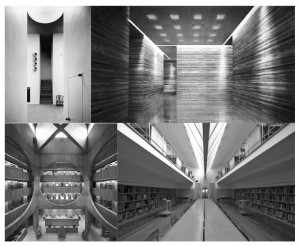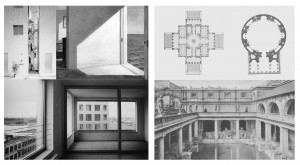PARTITION AND CONNECTION
|
ARTIFACT
WHAT The Uncompleted House, Shinohara\ Vals, Peter Zumthor\ Philips Exeter Library, Louis I. Kahn\ Porto Architectural School, Alvaro Siza There is a tendency that the boundary of space are becoming more and more blurry. As the complexity of modern life brings various activity, space is required to be inclusive. As for the opening between space is significant for the partition and connection, the thesis will start from the analysis of different situation of opening through height, scale, position, etc. based on the concentric space organization. Four programs are selected: house, bathhouse, library, school. These four program represent different scale. All of them possess a relative requirement for privacy or publicity. The thesis will try to disscuss whether one specific opening with concentric organization fullfill the diverse program. And whether it could bring new possibility to the program. The final project will be in architectural scale, with program chosen from house, bathhouse, library, school, through comparision and conclusion of the study of the opening.
WHY House in Gotanda, Go Hasegawa\ Window by the Sea, Edward Hopper \ Westkaai 1+2 Apartment Buildings Antwerp, Diener&Diener\ La Rotanda, Andra Palladio\ Pantheon \ Roman Bathhouse Opening participates in the partition and connection of space. The change of the size transforms the urban or architectural scale of the building; the position of the opening challenge the conventional experience of space; the height of it blurry the boundary of inside and outside. The concentric space organization possess a strong spiritual or order character from ancient time. People can easily feel the hierarchy of the space. However, besides the monumental and political architecture, nowadays, the serious and rigorous concentric space is not as required as before. Different methods are practiced to weaken the hierarchy. Such as changing the arrangement of room, using two system of materials, etc. How about the reorganization of opening? Through the adjustment of opening in scale, height, position, the boundary between space will be blurred. Can it bring different feeling? Will the concentric charater be weaken or even disappear ? The thesis will try to find out the possibility of the new space character. The selected program are various in different scale, from human-body scale to large one with specific function system. Some conclusions may arise through the case study, which will help developing the final project with program selected above the four.
HOW Wheels of Heaven Church, Aldo Van Eyck \ Zollverein School of Management and Design, SANAA\House in Tateshina Project, Shinohara stage 1: concentric space organization study stage 2: case study stage 3: architectural design
BIBLIOGRAPHY |



